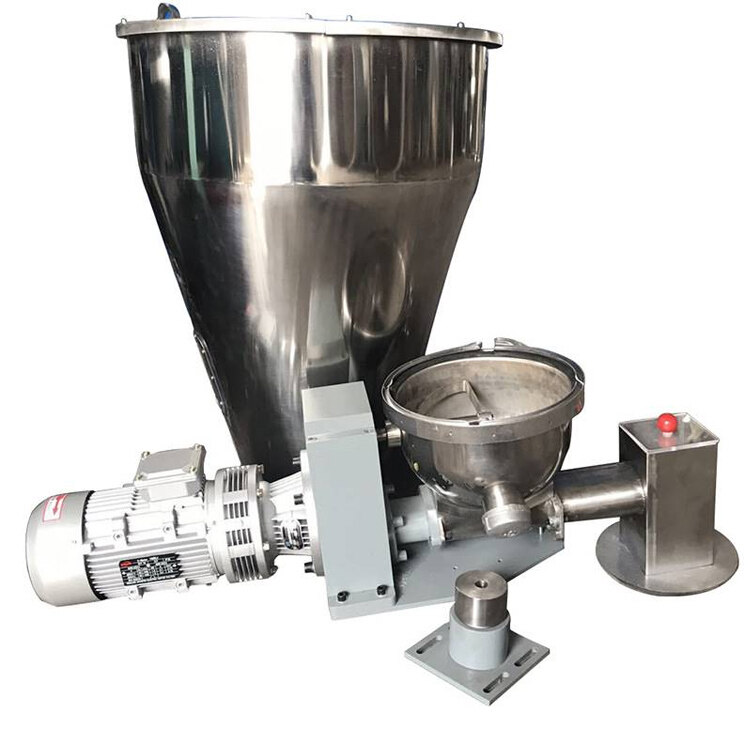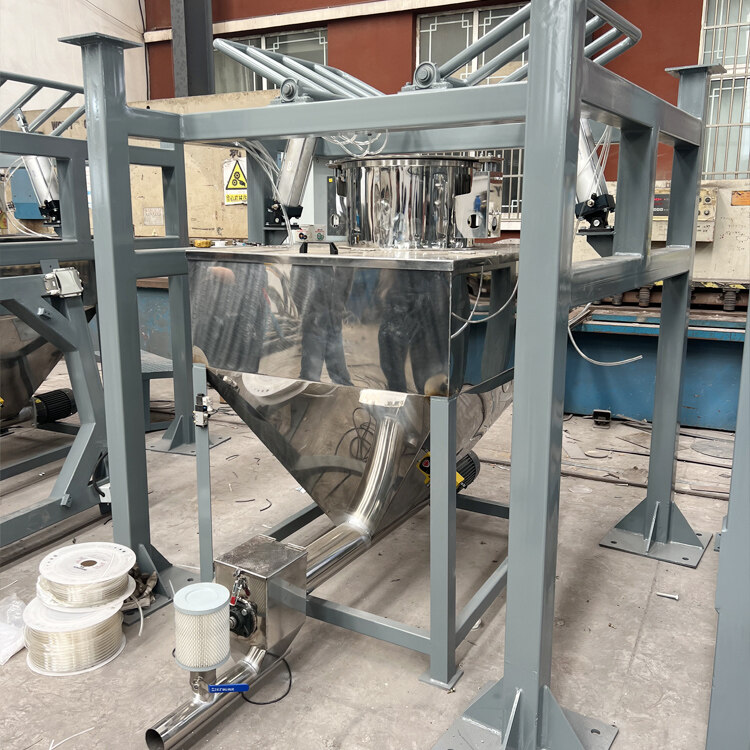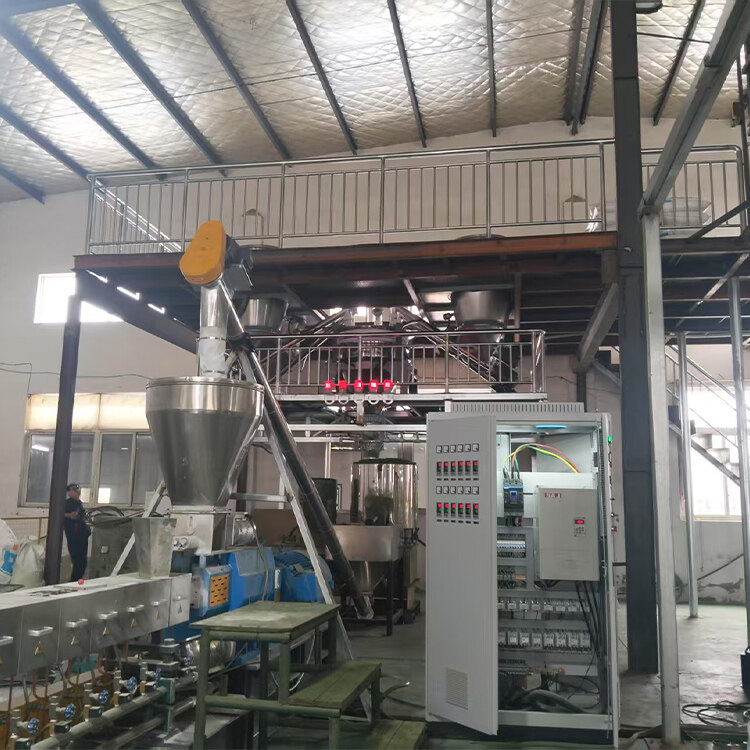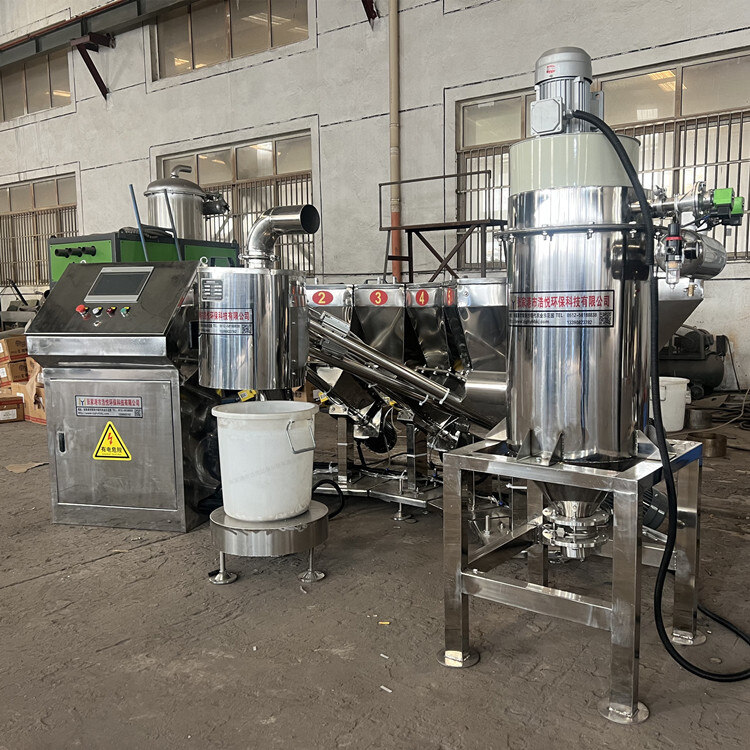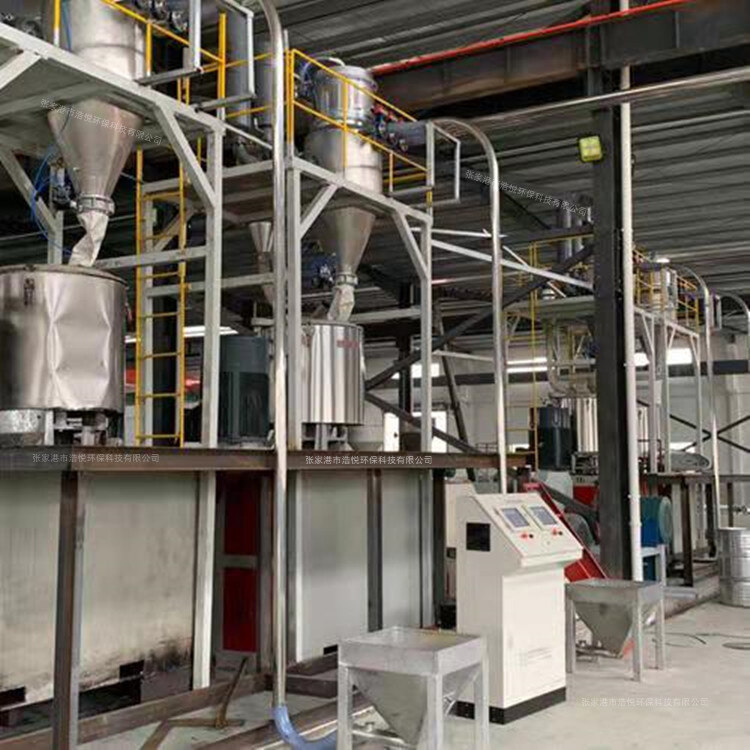- Introduction to automatic batching machine and fully automatic batching machine equipment
- The powder metering system tells you about the introduction of the mixing and drying machine
- 1000kg vacuum feeding machine
- Fully automatic small material batching system
- Research on Innovation of Automatic Weighing Machine Technology
- Design and operation of automatic batching system using PLC, industrial computer and frequency converter
Powder loss weighing feeder
- Category:other
- Hits:128次
- Release Date:2025-06-30
- Share:
- Inquiry
- Details
In modern industrial production, precise measurement and stable transportation of powdered materials have always been key links in ensuring product quality and production efficiency. The powder loss weighing feeder is an advanced equipment that integrates high-precision measurement and efficient feeding functions. With its unique working principle and excellent performance, it is widely used in various fields such as chemical, food, pharmaceutical, and building materials. It provides reliable material supply guarantee for the production process by real-time monitoring of material weight changes and precise control of feeding speed. Next, a comprehensive and in-depth introduction will be given to the powder loss weighing feeder from the aspects of equipment structure, working principle, core advantages, application scenarios, and development trends.
1、 Core structure composition of equipment
The powder loss weighing feeder is mainly composed of six core modules: weighing system, storage bin, feeding mechanism, driving device, control system, and frame. Each part cooperates with each other to form a complete material measurement and feeding system.
(1) Weighing system
The weighing system is the core component of the powder loss weighing feeder to achieve precise measurement, consisting of high-precision weighing sensors, weighing platforms, and signal processing modules. Strain gauges or electromagnetic force balance sensors are commonly used as weighing sensors, with an accuracy of ± 0.1% - ± 0.5%. They can sensitively capture small changes in the weight of powder materials in the storage bin and convert the weight signal into an electrical signal. The weighing platform is used to carry storage bins and materials, and its structural design balances strength and stability, effectively resisting external vibration, impact and other interference factors. The signal processing module amplifies, filters, and converts the weak electrical signal output by the weighing sensor into a digital signal, which is then transmitted to the control system to provide reliable data support for accurate measurement.
(2) Storage bin
The storage bin is used to store powder materials to be measured and transported, and its capacity is designed according to production needs. Common specifications range from several hundred kilograms to several tons. The shape of the warehouse body is mostly conical or square, and the inner wall is polished to reduce the friction between the material and the warehouse wall, ensuring smooth material discharge. For powder materials with poor fluidity and easy clumping, the storage bin will also be equipped with mixers, arch breaking devices, or vibrators to prevent material bridging and ensure that the material enters the feeding mechanism uniformly and stably. In addition, storage bins are usually equipped with level sensors to monitor the inventory of materials in real-time. When the material is below a set threshold, a replenishment signal is automatically issued.
(3) Feeding mechanism
The feeding mechanism is responsible for conveying the powder materials in the storage bin to downstream equipment according to the set flow rate. Common types include spiral feeders, disc feeders, and vibrating feeders. The spiral feeder pushes the material forward through the rotation of the spiral blades, which is suitable for most powder materials. The feeding amount can be accurately controlled by adjusting the speed of the spiral shaft; The disc feeder uses a rotating disc and scraper to scrape materials off the disc for feeding, suitable for powders with high viscosity; The vibration feeder uses the vibration generated by the vibration motor to make the material jump on the hopper, achieving uniform feeding. It is commonly used for powder materials that are sensitive to damage.
(4) Drive device
The driving device provides power for the feeding mechanism, mainly composed of a motor, a reducer, and a coupling. Select the appropriate power and speed model for the motor based on the type of feeding mechanism and material characteristics. For example, screw feeders are often equipped with speed regulating motors to achieve flexible adjustment of feeding speed. Reducer is used to reduce motor speed and increase torque, ensuring stable operation of feeding mechanism. Common types include cycloidal pinwheel reducer, gear reducer, etc. The coupling connects the motor and reducer to ensure smooth power transmission, while also having a certain buffering and shock-absorbing function to reduce vibration and noise during equipment operation.
(5) Control system
The control system is based on PLC (Programmable Logic Controller) or industrial computer as the core, combined with touch screen human-machine interaction interface (HMI). The operator inputs parameters such as material target flow rate, feeding speed, and initial weight of the silo through HMI. During the operation of the system, real-time weight data feedback from the weighing system is collected and compared with the preset flow target. Based on the deviation, the driving device parameters are automatically adjusted to change the operating speed of the feeding mechanism and achieve closed-loop control. In addition, the control system also has functions such as fault diagnosis, alarm prompts, data recording, and storage. When there is an abnormality in the weighing sensor, blockage of the feeding mechanism, or interruption of material flow, the system immediately issues an audible and visual alarm and records the fault information; At the same time, historical data reports can be generated to record material usage, feeding speed, equipment operating time, etc., providing a basis for production management and cost accounting.
(6) Rack
As the frame structure supporting the entire equipment, the rack is made of high-strength steel welded or bolted together, with sufficient strength and rigidity to withstand loads such as the weight of the storage bin and materials, equipment operation vibration, etc. The rack design fully considers equipment installation space, maintenance convenience, and the need for connection with upstream and downstream equipment, ensuring stable operation and easy operation and maintenance of the powder loss weighing feeder.
2、 Working principle
The powder loss weighing feeder operates based on the principle of "weight loss measurement". After the device is started, the storage bin is installed on the weighing sensor, which collects real-time data on the total weight of the storage bin and materials and transmits it to the control system. When the feeding mechanism starts working, the material is transported to downstream equipment, and the weight of the material in the storage bin gradually decreases. The weighing sensor continuously monitors the weight changes.
The control system analyzes and calculates the weight change data based on the preset material flow target value. If the actual weight change rate does not match the target flow rate, the control system automatically adjusts the operating parameters of the feeding mechanism. For example, when the material output is detected to be too fast and the weight reduction rate exceeds the target value, the control system reduces the speed of the feeding mechanism; On the contrary, accelerate the speed to ensure that the material output flow rate is consistent with the set value, achieving precise measurement and stable feeding. This dynamic measurement method based on real-time weight changes effectively overcomes errors caused by material characteristic fluctuations, equipment wear, and other factors in traditional measurement.
3、 Core technological advantages
(1) Ultra high measurement accuracy
By monitoring the weight changes of materials in real-time and dynamically adjusting the feeding speed, the powder loss weighing feeder can effectively eliminate the influence of material characteristic fluctuations (such as humidity, particle size changes), equipment wear and other factors on measurement accuracy. In scenarios where high precision is required for chemical catalyst addition, food additive ratio, etc., the measurement error can be controlled within ± 0.5%, and in some high-end applications, it can even reach ± 0.1%, effectively ensuring product quality stability.
(2) Stable and reliable continuous feeding
The feeding speed can be automatically adjusted according to production needs to ensure continuous and stable transportation of powder materials to downstream equipment, avoiding material interruption or uneven feeding. Even if the material characteristics undergo certain changes, such as moisture causing a decrease in fluidity, the equipment can maintain stable flow output through adaptive adjustment, ensuring production continuity.
(3) Strong material adaptability
Suitable for various powder materials, including flour and cement with good fluidity, as well as milk powder and carbon black with high viscosity and easy agglomeration. By flexibly selecting the type of feeding mechanism, adjusting the structure and operating parameters of the storage bin, it is possible to effectively respond to different material characteristics and meet diverse production needs.
(4) Intelligent and Automated Operations
Equipped with highly automated operation capabilities, operators only need to set parameters on the human-machine interface, and the equipment can automatically complete material measurement and feeding tasks, reducing manual intervention, labor intensity, and human errors. The intelligent control system supports remote monitoring and data transmission, and management personnel can view the real-time operation status of equipment, adjust parameters, and achieve intelligent management of the production process.
4、 Application scenarios
(1) Chemical industry
In the production of chemical products such as coatings, inks, plastics, rubber, etc., it is used for precise measurement and continuous feeding of powder raw materials such as resin powder, pigment powder, additives, catalysts, etc. In the process of plastic granulation, precise control of the amount of color masterbatch and antioxidant added ensures stable color and performance of plastic products; In rubber mixing, precise measurement of powder materials such as carbon black and sulfur can improve the quality of rubber products.
(2) Food industry
In the process of food processing, various powder raw materials are accurately proportioned and quantitatively transported, such as flour, sugar powder, milk powder, seasonings, food additives, etc. In the production of baked goods, strictly control the amount of flour, sugar and other raw materials input according to the formula to ensure consistent taste and quality of the food; In the production of instant coffee and protein powder, precise measurement of raw materials is achieved to meet food safety and hygiene requirements.
(3) Pharmaceutical industry
In the process of drug production, precise measurement is carried out on powder materials such as active ingredients and excipients to ensure the accuracy and stability of drug ingredients and meet GMP (Good Manufacturing Practice) requirements. In the production of solid preparations such as tablets and capsules, precise control of the dosage of drug powder and adhesive ensures reliable drug quality.
(4) Building materials industry
Used for measuring and feeding materials such as cement powder, fly ash, additives, etc. in the production of building materials such as cement, dry mortar, putty powder, gypsum powder, etc. In the production of dry mortar, precise control of cement, sand, and additive ratios is necessary to ensure that the strength, bonding properties, and other properties of the mortar meet the requirements; In the production of putty powder, achieving uniform mixing and precise measurement of raw materials can improve the quality of building materials products.
5、 Development Trends
In the future, powder loss weighing feeders will develop towards higher precision, intelligence, integration, and green direction. In terms of precision improvement, we will develop new high-precision weighing sensors, optimize control algorithms, and signal processing technologies to meet the measurement needs of nanoscale and trace powder materials; In terms of intelligence, artificial intelligence and machine learning technologies are introduced to enable devices to have self-learning, self diagnosis, and adaptive capabilities, automatically optimizing operating parameters; In terms of integration, it deeply integrates with enterprise ERP, MES and other management systems to achieve collaborative management of production planning, material inventory, measurement and feeding; Greening is reflected in reducing equipment energy consumption, reducing dust emissions, adopting environmentally friendly materials, and promoting sustainable development of the industry.


